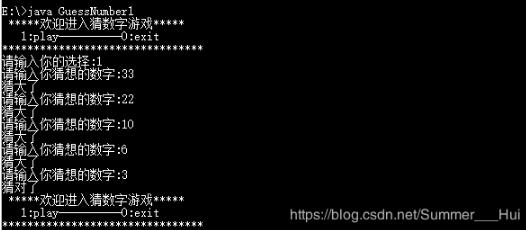Django用戶認證系統如何實現自定義
自定義用戶認證系統
Django 自帶的用戶認證系統已經可以滿足大部分的情況,但是有時候我們需要某些特定的需求。Django 支持使用其他認證系統、也可以擴展Django的User模塊,完全自定義新的認證模塊。
參考:https://docs.djangoproject.com/en/2.0/topics/auth/customizing/
a、拷貝以下代碼到model文件中:
from django.db import modelsfrom django.contrib.auth.models import ( BaseUserManager, AbstractBaseUser)class MyUserManager(BaseUserManager): def create_user(self, email, name, password=None): ''' Creates and saves a User with the given email, date of birth and password. ''' if not email: raise ValueError(’Users must have an email address’) user = self.model( email=self.normalize_email(email), name=name, ) user.set_password(password) user.save(using=self._db) return user def create_superuser(self, email, name, password): ''' Creates and saves a superuser with the given email, date of birth and password. ''' user = self.create_user( email, password=password, name=name, ) user.is_admin = True user.save(using=self._db) return userclass UserProfile(AbstractBaseUser): ’’’賬號表’’’ email = models.EmailField( verbose_name=’email address’, max_length=255, unique=True, ) name = models.CharField(max_length=32) is_active = models.BooleanField(default=True) is_admin = models.BooleanField(default=False) objects = MyUserManager() USERNAME_FIELD = ’email’ REQUIRED_FIELDS = [’name’] def __str__(self): return self.email def has_perm(self, perm, obj=None): 'Does the user have a specific permission?' # Simplest possible answer: Yes, always return True def has_module_perms(self, app_label): 'Does the user have permissions to view the app `app_label`?' # Simplest possible answer: Yes, always return True @property def is_staff(self): 'Is the user a member of staff?' # Simplest possible answer: All admins are staff return self.is_admin
注意:email, name等字段都是可以自定義的
b、在admin.py中添加如下代碼:
from django import formsfrom django.contrib import adminfrom django.contrib.auth.models import Groupfrom django.contrib.auth.admin import UserAdmin as BaseUserAdminfrom django.contrib.auth.forms import ReadOnlyPasswordHashFieldfrom customauth.models import MyUserclass UserCreationForm(forms.ModelForm): '''A form for creating new users. Includes all the required fields, plus a repeated password.''' password1 = forms.CharField(label=’Password’, widget=forms.PasswordInput) password2 = forms.CharField(label=’Password confirmation’, widget=forms.PasswordInput) class Meta: model = MyUser fields = (’email’, ’date_of_birth’) def clean_password2(self): # Check that the two password entries match password1 = self.cleaned_data.get('password1') password2 = self.cleaned_data.get('password2') if password1 and password2 and password1 != password2: raise forms.ValidationError('Passwords don’t match') return password2 def save(self, commit=True): # Save the provided password in hashed format user = super().save(commit=False) user.set_password(self.cleaned_data['password1']) if commit: user.save() return userclass UserChangeForm(forms.ModelForm): '''A form for updating users. Includes all the fields on the user, but replaces the password field with admin’s password hash display field. ''' password = ReadOnlyPasswordHashField() class Meta: model = MyUser fields = (’email’, ’password’, ’date_of_birth’, ’is_active’, ’is_admin’) def clean_password(self): # Regardless of what the user provides, return the initial value. # This is done here, rather than on the field, because the # field does not have access to the initial value return self.initial['password']class UserAdmin(BaseUserAdmin): # The forms to add and change user instances form = UserChangeForm add_form = UserCreationForm # The fields to be used in displaying the User model. # These override the definitions on the base UserAdmin # that reference specific fields on auth.User. list_display = (’email’, ’date_of_birth’, ’is_admin’) list_filter = (’is_admin’,) fieldsets = ( (None, {’fields’: (’email’, ’password’)}), (’Personal info’, {’fields’: (’date_of_birth’,)}), (’Permissions’, {’fields’: (’is_admin’,)}), ) # add_fieldsets is not a standard ModelAdmin attribute. UserAdmin # overrides get_fieldsets to use this attribute when creating a user. add_fieldsets = ( (None, { ’classes’: (’wide’,), ’fields’: (’email’, ’date_of_birth’, ’password1’, ’password2’)} ), ) search_fields = (’email’,) ordering = (’email’,) filter_horizontal = ()# Now register the new UserAdmin...admin.site.register(MyUser, UserAdmin)# ... and, since we’re not using Django’s built-in permissions,# unregister the Group model from admin.admin.site.unregister(Group)
C、 在settings.py中添加配置:
AUTH_USER_MODEL = ’customauth.MyUser’ #customauth指APP name, MyUser指自定義的用戶表model類(這個時候仍然可以使用django.contrib.auth import authenticate,login,logout 等認證方法,只是保存數據的表不一樣)
D、創建超級用戶
首先我們要新建一個用戶名,用來登陸管理網站,可以使用如下命令:
python manage.py createsuperuser
輸入想要使用的用戶名:
Username (leave blank to use ’administrator’): user01
輸入email:
Email address: (在這里輸入你的自己的郵箱帳號)
輸入密碼,需要輸入兩次,并且輸入密碼時不會顯示出來:
Password:
Password (again):
當兩次密碼都相同的時候,就會提示超級帳號創建成功。
Superuser created successfully.
E、使用:
用前一步創建的用戶,登陸后臺管理系統http://0.0.0.0:8081/admin/
以上就是本文的全部內容,希望對大家的學習有所幫助,也希望大家多多支持好吧啦網。
相關文章:

 網公網安備
網公網安備